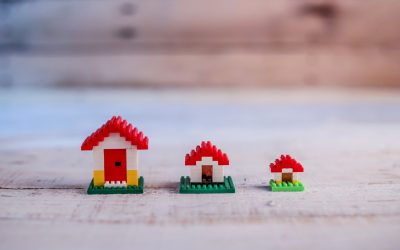Aperçu
Dans cette activité en plein air, les élèves construisent des mini-huttes de castor. À l’aide de matériaux naturels et de techniques empruntées à ces illustres bâtisseurs, les élèves mettent en scène un conte bien connu, Cinq joyeux castors, avec leurs projets finis.
Overview
In this outdoor learning activity, students build mini beaver lodges. Using natural materials and techniques inspired by these remarkable builders, the students bring to life the well-known story Five Busy Beavers with their finished projects.
FREE RESOURCE AVAILABLE (see details at bottom of this post)
NB Curricular Connections
This lesson is ideally suited for grades 2-4FI, however can be adapted according to your learners’ needs.
Art du langage en immersion française 3 année:
Strand : Communication Orale. Big Idea: Production et Interaction. Orale. Skill Descriptor: Donner de courtes présentations et participer à des conversations sur des sujets connus, des concepts étudiés et des expériences personnelles à l’aide de stratégies d’élocution et d’interaction.
Strand: Lecture. Big Idea : Compréhension. Skill Descriptor: Lire avec compréhension une variété de textes de plus en plus complexes.
Sciences :
Strand : Littératie Scientifique. Big Idea : Recherche. Skill Descriptor: Planifier des recherches pour résoudre des problèmes concernant le monde naturel local : conditions météorologiques et climat, habitats, plantes et animaux.
Mathématiques :
Strand : Nombre. Big Idea: Sens du nombre.
Mieux-être personnel :
Strand : Apprentissage à la carrière. Big Idea : Faire l’expérience de parcours professionnels potentiels.
What You’ll Need
- Book – Cinq joyeux castors (by: Stella Partheniou Grasso)
- Water Bottle (1 per student)
- Clipboard (1 per small group)
- Pencils
- Colouring Materials (crayons, pencil crayons, markers)
- Sheet Protector (1 per small group)
- 1 small cardboard box (to put any leftover materials or waste into)
- Scissors (1 per small group)
- Busy Beavers Challenge Sheet
- Five Busy Beavers Puppets (1 set per small group, printed on cardstock)
- Natural materials (sticks, leaves, stones, grass, etc.)
- Digging materials (shovels, etc.) Optional
- Detailed lesson plan in French and reflection tools provided as attachment.
Instructions
Please note: This activity is intended to be provided in an outdoor learning environment, however, feel free to adapt and change to meet the needs of your learners and outdoor spaces.
Beaver Knowledge: Before the outdoor building activity begins, ask learners: What do you know about beavers?” To add to their responses, feel free to watch the following short videos with key facts about beavers and their incredible building skills. “Qu’est-ce que vous savez à propos les castors ?” Pour compléter leurs réponses, n’hésitez pas à regarder les courtes vidéos suivantes, qui renseignent sur les castors et leurs grands talents de bâtisseurs.
Outdoor Expectations: If students have not had much outdoor learning experience, before heading outdoors, discuss with learners the difference between learning inside of the classroom vs. outdoors. Using a piece of chart paper, co-construct 3-5 learning expectations for outdoor learning. (Examples: We will respect all living things. We will not leave behind any materials that might harm our outdoor friends and spaces, etc.) Have learners print their name on the expectations chart, as a symbol of their commitment to following them, to the best of their ability.
PREP and STEP: Divide learners into small groups of your desired size. Each group needs: a clipboard, colouring materials, pencil, 1 sheet protector, 1 copy of Busy Beavers Puppets pages, scissors, 1 copy of Busy Beavers Building Challenge page, water bottles and outdoor attire. Learners can place all the printed sheets into the page protector and attach to the clipboard. Once groups have all their materials, have them STEP in line and follow you to the desired outdoor location.
Beaver Dams vs. Beaver Lodges: Ask learners: “Qu’est-ce que vous savez à propos les castors?” Have multiple learners share their thoughts. Find a puddle or create one with your own water bottle (use some larger rocks and sticks to push more water to one side of the puddle) to show learners the difference between a beaver dam and a beaver lodge.
Beaver Dam – Beavers build dams to create a deep pond of water in which they will build a home. They need deeper waters for protection and safety. Not only can they outswim their predators, but deeper waters also provide another layer of protection for their young, who will be born during winter, in their lodge. Dams are naturally good and often bring new life and balance to the environment around them. Beavers will gnaw and drag big logs to create a dam.
Beaver Lodge – Beavers build their homes with logs, sticks, mud, and other various natural materials that they find in the surrounding forests. Beavers are expert weather-proofers – their lodges are waterproof and wind resistant to endure cold winters. They also have an entrance and an exit – in case of a chasing predator, they have two ways out! Beavers constantly patch up leaks, fix cracks and ensure their lodge is warm and cozy. They are expert builders!
Read Aloud – Cinq joyeux castors: During reading, have learners start with five fingers and have them show and count their fingers, as the story countdowns from five to one! After reading, have learners share all the kinds of skills that the beavers were doing to build a dam and to build their lodge. Building is hard work!
Joyeux Castors Mini-Lodge Building Challenge: Announce the building challenge: to build a mini beaver lodge! Mini lodges will not be built in a deep pond, but in designated outdoor spaces. There are three requirements:
- Only natural materials
- Must have an entrance and an exit
- Must be waterproof (one beaver puppet will be placed inside and learners will test their lodge using a water bottle)
Using the Joyeux Castors Building Challenge printable, in small groups, read over all the skills needed to create a mini beaver lodge that are listed on the sheet. Give small groups time to plan and sketch out their ideas on the printable. (Note: allowing students to use mud is optional. Dead grasses and plants can also help keep the lodge together and water out.)
Once small groups have a plan, give them time to build. Once groups have completed their mini lodges, they must test their design. One team member can cut and colour out one beaver puppet (from printables) to place inside of the mini lodge during testing. If leaks or cracks are present, have learners’ problem-solve to fix them. Like in the story, with one beaver left, celebrate the mini lodge creations! Allow each small group time to present and describe their mini beaver lodge to the larger group.
Joyeux Castors Puppet Play: Using the printables provided, have small groups colour and cut out all of their puppets. Re-read the story and have learners re-enact the actions with their mini lodge. Again, invite learners to countdown along with the story!
Real Life Joyeux Castors: Using the Joyeux Castors Building Challenge printable, ask learners if they can name some real-life “castors” in their community who help to build homes. (Examples: Ferry logs = truck driver, pile sticks = framer, patch up holes = insulation installers, fill in crack = crack filler, etc.)
Extension Ideas
- Go on a community walk. What types of construction and what types of construction workers do you see evidence of?
- Visit a local pond. Can you spot evidence of some of the same animals that were found in the story? What types of natural construction do you see?
- Do an Animal Builder Search. By researching with books and/or online, have learners discover other amazing animal builders. See if they can mimic their building skills in their outdoor spaces, as well.
- Bake beaver tails with your class
- Use the puppets for part- part whole practice in Math (How many are hiding in the lodge? How many are not?)
Reflection Activity
Please see the attached PDF for several choices on how you and your learners can reflect upon today’s learning activity.
Global Competencies:
What We Teach: Being and Becoming Globally Competent – NB Curriculum Framework (nbed.ca)
Acknowledgements
A SPECIAL THANKS to educator, Karen Howland, of ASD-W’s Keswick Ridge School and her incredible Grade 1 class for piloting this activity in the Fall of 2023. Karen added her wisdom, her expertise, and additional activities to make this learning opportunity even better for future learners!
- Les castors, les rois de la construction. National Geographic Les castors, les rois de la construction – YouTube – 1 min 50s
- Le castor. Hinterland Who’s Who Le castor – YouTube– 3 min 18s
- Le castor du Canada. National Geographic Le castor du Canada, véritable tronçonneuse sur pattes – YouTube
Resource & Feedback
New Brunswick Teachers – Do you wish to try this activity with your class and receive a free copy of Cinq joyeux castors (by: Stella Partheniou Grasso)?
Email nathan.langille@gnb.ca to inquire about this free resource! Provide name of resource requested and school mailing address.
Supplies of the book are limited.
After you receive the book and complete the lesson, all we ask is that you provide some feedback by filling out a short survey click here. You will also be entered in a monthly draw for Centres of Excellence prizes!




